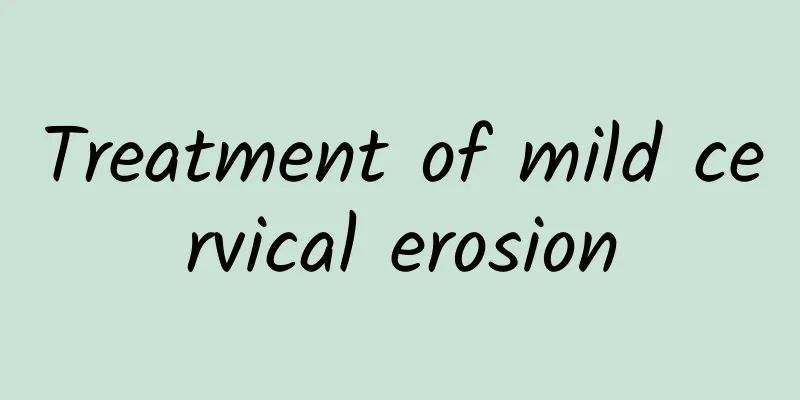What's wrong with the child's big teeth being decayed?

|
Tooth decay is a common symptom in children. It is related to the fact that children do not pay attention to oral hygiene and often eat sweets. At this time, it is necessary to understand whether the child's tooth decay has been replaced, whether it is permanent teeth or deciduous teeth. If it is permanent teeth, the holes should be filled in time to avoid causing greater harm. If it is deciduous teeth, you should pay attention to daily oral hygiene, and after replacing the permanent teeth, you should also pay attention to avoid tooth deformities. Causes of Tooth Decay 1. bacteria It is a necessary condition for the occurrence of dental caries. It is generally believed that there are two types of dental caries bacteria. One is the acid-producing bacteria, mainly Streptococcus mutans, Actinomyces and Lactobacillus, which can decompose carbohydrates to produce acid, leading to demineralization of tooth inorganic matter; the other is Gram-positive cocci, which can destroy organic matter and cause tooth cavities after long-term action. The recognized main cariogenic bacteria is Streptococcus mutans, and others include Actinomycetes, Lactobacillus, etc. Bacteria mainly adhere to the tooth surface with the help of plaque. After the carbohydrates in the food retained in the mouth are degraded, on the one hand they polymerize to produce highly viscous glucans to form the plaque matrix, and on the other hand they produce acid to demineralize the teeth. The composition of the plaque is relatively complex. In addition to a large number of bacteria, there are also sugars, proteins, enzymes and other substances. 2. Oral environment The oral cavity is the external environment of teeth and is closely related to the occurrence of caries, among which food and saliva play the dominant role. (1) Food is mainly carbohydrates, which are related to the formation of plaque matrix and are also the main energy source for bacteria in plaque. Bacteria can use carbohydrates (especially sucrose) to metabolize acids and synthesize extracellular and intracellular polysaccharides. The organic acids produced are beneficial to the growth of acid-producing and acid-resistant bacteria, and are also beneficial to the demineralization of dental hard tissues. Polysaccharides can promote the adhesion and accumulation of bacteria on the tooth surface and provide an energy source when exogenous sugar is lacking. Therefore, carbohydrates are the material basis for the occurrence of dental caries. (2) Saliva Under normal circumstances, saliva has the following functions: Mechanical cleaning action reduces bacterial accumulation. The antibacterial effect directly inhibits bacteria or inhibits the adhesion of plaque on the tooth surface. The antacid effect is neutralized by the bicarbonate and other substances it contains. The anti-dissolution effect enhances the acid resistance of teeth and reduces solubility through the calcium, phosphorus, fluoride, etc. Changes in the quantity and quality of saliva can affect the caries prevalence. Clinically, the caries prevalence in patients with xerostomia or salivary secretion is significantly increased. Patients who undergo maxillofacial radiotherapy may have multiple dental caries due to damage to the salivary glands; on the other hand, when the amount of lactic acid in saliva increases or the bicarbonate content decreases, it is also conducive to the occurrence of caries. 3. Host Teeth are target organs in the process of caries. The morphology, mineralization degree and tissue structure of teeth are directly related to the occurrence of caries. For example, pits and fissures of teeth and teeth with poor mineralization are more susceptible to caries, while teeth with good mineralization and appropriate fluoride content in the tissues have stronger caries resistance. On the other hand, the structure of teeth is closely related to the body, especially during development. It not only affects the development and structure of teeth, but also has a great influence on the flow, flow rate and composition of saliva, and is therefore also an important link in the occurrence of caries. 4. time The development of dental caries is a long process. It usually takes 1.5-2 years from the initial stage of dental caries to the formation of clinical cavities. Therefore, even if cariogenic bacteria, a suitable environment and a susceptible host exist at the same time, dental caries will not occur immediately. Only when the above three factors exist at the same time for a considerable period of time can dental caries occur. Therefore, the time factor is of great significance in the occurrence of dental caries. |
<<: Why does my child keep winking?
>>: How to calm down an impetuous child
Recommend
How many years can you live? These data are clear at a glance
A recent study from Duke University in the United...
Is severe mitral regurgitation serious?
The mitral valve belongs to a tissue on the ventr...
Is it better to have thin blood or thick blood?
Blood is the most important liquid in our human b...
What causes blood in stool due to inflammation?
Everyone will experience getting angry in life, e...
How to regulate the tongue in traditional Chinese medicine
Traditional Chinese medicine is an ancient medica...
Treatment options for urinary incontinence
Urinary incontinence is actually quite familiar t...
What medicine should I take for damaged corpus cavernosum?
The corpus cavernosum is the cavernous body of th...
Differences between Snow Chrysanthemum and Chrysanthemum
In real life, chrysanthemum is a relatively commo...
What to do if you have chest tightness, shortness of breath, or difficulty breathing due to a cold
Cold is a very common disease in life. After peop...
Hot compress with coarse salt for lumbar disc herniation
Hot compress with coarse salt is a common health ...
Retinal detachment
You must have heard this term a lot in recent yea...
My asshole is swollen and it hurts
The anus, because it is used to excrete feces, be...
What to do with hernia in the elderly, Chinese medicine and surgical treatment methods
Many elderly people suffer from hernia due to the...
What are the specific differences between fish oil and cod liver oil?
Fish oil and cod liver oil are both nutritional s...
How to correct women’s breasts growing to the sides?
Breast health is a very important matter for peopl...









